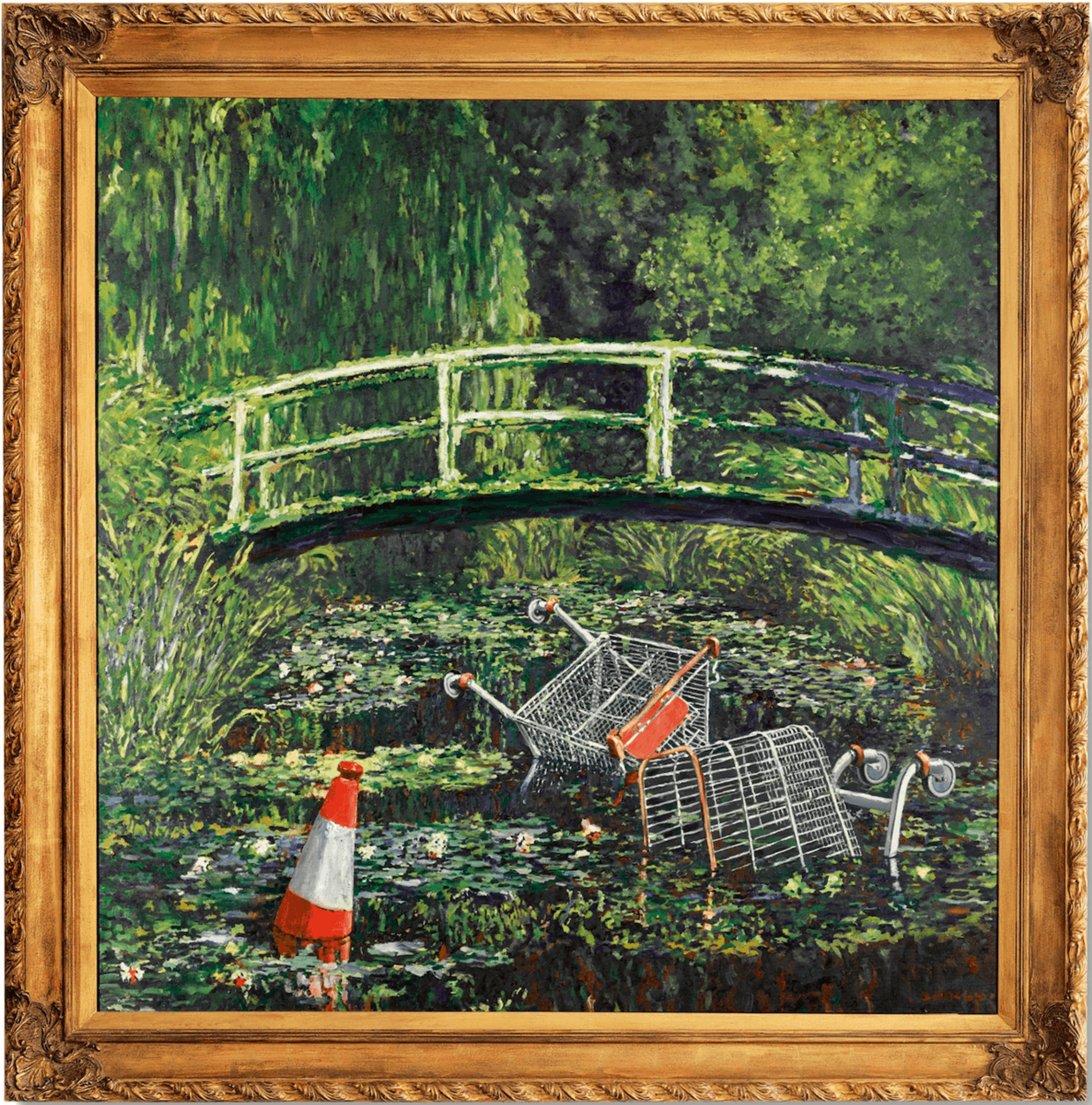Unique Flower and Everyday Scene Oil Paintings for Sale
Wiki Article
The Advantages of Purchasing Oil Paints: Why They Are a Timeless Financial investment
The advantages of buying oil paintings extend past mere visual appeals. These artworks lug historic importance and social worth, making them worthwhile additions to any collection. Their unique textures and strategies add to an interesting visual experience. Well established artists commonly see their work appreciate over time, providing a prospective financial advantage. As one explores the complex reasons for purchasing oil paintings, the deeper implications of such a choice become increasingly evidentThe Visual Appeal of Oil Paints
The attraction of oil paints hinges on their lively shades and rich textures, which can transform any kind of room into a remarkable setting. These art work have a depth that mesmerizes viewers, drawing them into the ins and outs of the brushstrokes and the interaction of light and darkness. The shiny surface of oil paint enhances the aesthetic experience, giving life to scenes and topics in a manner that tools frequently can not achieve. In addition, the range of designs-- from classic to modern-- enables for a varied selection that can complement any type of design. The emotional vibration shared via shade options and strategies includes a layer of link in between the observer and the artwork, making oil paints not simply ornamental items, yet powerful expressions of artistic vision.Historic Value and Cultural Worth
Oil paintings serve as important links to a creative heritage, showcasing methods and styles that have actually progressed over centuries. They envelop social expressions and identities, mirroring the worths and stories of their time. By acquiring these jobs, individuals contribute to the preservation of background and the gratitude of varied social legacies.
Imaginative Heritage Preservation
While many may neglect the relevance of creative heritage, purchasing oil paintings plays a necessary function in protecting cultural and historical stories. These artworks function as visual documentation of their time, capturing the significance of societal values, customs, and historic occasions. By acquiring oil paints, collection agencies contribute to the protecting of social legacies, making sure that future generations can value and discover from these imaginative expressions. Each piece mirrors the one-of-a-kind story of its maker and the context in which it was made. Additionally, the ongoing gratitude and display of oil paintings in different settings assist to promote an understanding of varied artistic activities, improving the social landscape. For that reason, purchasing oil paintings is not merely a financial decision but an act of social stewardship.Cultural Expression and Identity
Art acts as an effective tool for social expression and identity, showing the diverse narratives that shape societies. Oil paintings, in particular, catch the significance of social heritage, showing historical contexts and sociopolitical environments. Each brushstroke shares emotions and tales unique to certain traditions, permitting viewers to involve with the musician's cultural history. This link fosters a sense of belonging and understanding among various communities. Furthermore, oil paints often work as visual documents of social development, showcasing changes in identity over time. The investment in these art work not only supports artists yet also preserves social legacies, making them considerable properties for collection agencies. Ultimately, oil paints enhance one's admiration for the details of human experience and the abundant tapestry of social identification.
Admiration in Value With Time

The admiration of oil paintings gradually is influenced by different factors, including historic worth trends that mirror transforming preferences and social significance. In addition, the credibility of the musician plays an essential function in establishing the artwork's market price, commonly increasing as the musician gains recognition. Market need variations can even more impact rates, making oil paintings a potentially financially rewarding investment for collectors.
Historic Value Patterns
As collectors seek to buy tangible properties, the historical value trends of oil paints expose an engaging story of appreciation in time. Historically, oil paints have demonstrated a regular higher trajectory in worth, especially for works by established artists. Economic cycles and market demand have influenced these trends, with periods of increased rate of interest commonly leading to significant cost surges. Public auction records frequently highlight the exceptional returns achieved by iconic items, further strengthening the idea of oil paints as viable long-term financial investments. Furthermore, cultural activities and changes in collector preferences have sometimes stimulated unexpected admiration, revealing that the art market, while rather unpredictable, usually favors top quality oil paintings. Comprehending these historical patterns can direct capitalists in making informed choices.Musician Credibility Influence
While the track record of an artist plays an essential role in the recognition of oil paintings, it is necessary to acknowledge that this effect can vary considerably based upon several variables. Developed artists, specifically those with a substantial historical or cultural influence, have a tendency to see their jobs appreciate more swiftly. Alternatively, lesser-known or emerging artists may not experience the exact same level of demand, impacting their art work's value. In addition, the musician's ability to produce a constant body of work and maintain relevance in the art globe can influence lasting admiration. Collectors often seek works from artists that are identified by respectable galleries and organizations, which can even more boost the value of an oil painting in time, making artist track record a crucial factor to consider in investment decisions.
Market Need Variations
Just how do market need variations influence the recognition of oil paints gradually? The value of oil paints is intrinsically linked to market demand, which can vary based upon financial problems, trends, and collection agencies' preferences. In times of economic prosperity, need frequently climbs, leading to raised prices as more customers get in the marketplace. On the other hand, throughout economic recessions, need might dwindle, triggering values to go stale or perhaps decline. Additionally, the popularity of specific musicians can change, affecting their work's charm. Inevitably, recognizing market need is important for financiers, as well-managed collections can value substantially over time, reflecting both the ability of the musician and the more comprehensive market dynamics. This interaction emphasizes the importance of critical buying in oil paint financial investments.One-of-a-kind Appearances and Techniques
Oil paints mesmerize viewers with their unique structures and strategies, showcasing the musician's proficiency over the tool. The thick application of paint, called impasto, creates a three-dimensional result, inviting touch and improving visual depth. Artists usually use numerous brush strokes, layering, and glazing approaches to achieve luminous shades and elaborate details. This versatility permits rich contrasts and subtle shifts, making each art work distinctively expressive. The slow drying out time of oil paint allows musicians to mix colors perfectly, resulting in smooth gradients and lively shades. These methods add to the paint's general personality, making it a compelling centerpiece. Each oil paint serves as a sign of the creativity and skill integral in standard artistic practices.Versatility in Home Decoration
The special structures and techniques of oil paintings not just display creative ability yet likewise enhance their convenience in home decoration. These art work can effortlessly complement numerous interior styles, from modern minimal to standard style. Oil paintings act as centerpieces, drawing focus and sparking discussion among guests. Their abundant shades and depth can harmonize with various color combinations, making them adaptable to altering layout patterns. In addition, the emotional vibration of oil paintings can develop setting, whether it be warmth in a comfy living space or vibrancy in an imaginative workspace. By integrating oil paints, home owners boost their rooms, changing them right into thoughtfully curated environments that mirror personal taste and creative appreciation. Inevitably, oil paints are an enduring selection for improving home aesthetics.Connection to Popular Artists
While many art forms can evoke appreciation, buying oil paintings typically establishes a distinct connection to renowned artists throughout background. Owning an oil paint permits enthusiasts to engage with the creative visions of masters like Van Gogh, Monet, and Rembrandt. Each brushstroke personifies the musician's intents, methods, and emotions, offering understanding right into their globe. This connection goes beyond time, as each item lugs a story that shows the historical and cultural context of its creation. Collection agencies not only acquire a job of art however additionally a fragment of the artist's legacy. As art lovers explore the stories behind these paints, they obtain a deeper appreciation for the workmanship and artistic activities that shaped their development, boosting the value of their financial investment.Mental and emotional Benefits of Art
Art regularly serves as a powerful catalyst for psychological and emotional well-being. The existence of oil paintings in a living space can stimulate a variety of emotions, from peace to ideas. Their dynamic shades and complex details provide viewers a retreat, enabling reflection and reflection. Studies suggest that involving with art can reduce tension and anxiousness, fostering a feeling of tranquility. In addition, owning oil paintings for sale original art work can create an individual link, enhancing feelings of pride and pleasure. This emotional bond usually leads to a much deeper gratitude of one's surroundings, changing a house into a home. Inevitably, the psychological advantages of art extend beyond aesthetic appeals, adding to general psychological health and improving life experiences.
Frequently Asked Concerns
Just how Do I Pick the Right Oil Painting for My Space?
Selecting the best oil paint includes taking into consideration the area's color system, dimension, and total aesthetic. One need to assess individual taste, the paint's psychological influence, and how well it matches existing style prior to deciding.
What Factors Influence the Value of an Oil Painting?
The worth of an oil paint is influenced by variables such as the artist's credibility, provenance, historical relevance, rarity, condition, and market demand. Each aspect adds to overall worth and value amongst enthusiasts.How Can I Take Care Of and Keep My Oil Paint?
To look after and maintain an oil painting, one ought to consistently dirt it with a soft towel, prevent straight sunlight direct exposure, control moisture degrees, and consider specialist cleaning to maintain its vibrancy and stability.Are There Particular Musicians Understood for Their Oil Paints?
Various artists are renowned for their oil paintings - oil paintings for sale. Remarkable figures include Vincent van Gogh, Claude Monet, and Rembrandt, each commemorated for their unique techniques and payments to the art world via lively, distinctive oil mediumsWhere Can I Purchase Genuine Oil Paints?
Authentic oil paintings can be bought from respectable galleries, art fairs, and online systems focusing on great art. Collectors must verify the authenticity and provenance before making a purchase to assure a useful financial investment. Historically, oil paintings have shown a constant upward trajectory in worth, specifically for works by well established artists. While the credibility of an artist plays a crucial duty in the gratitude of oil paintings, it is vital to identify that this effect can vary considerably based on a number of variables. Oil paintings astound visitors with their distinct appearances and methods, showcasing the artist's mastery over the tool. While lots of art forms can stimulate adoration, purchasing oil paints usually establishes a distinct connection to distinguished musicians throughout history. The value of an oil painting is influenced by elements such as the artist's track record, provenance, historic significance, rarity, market, and problem demand.Report this wiki page